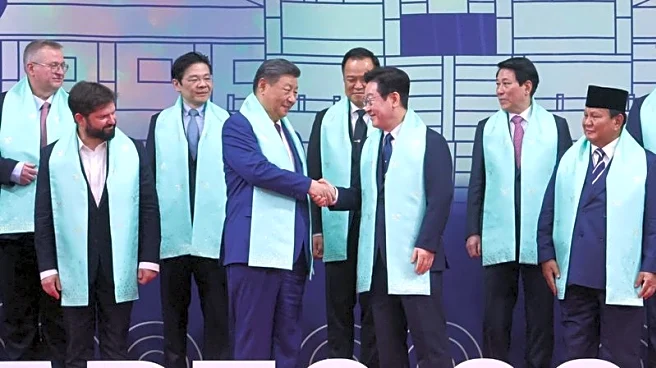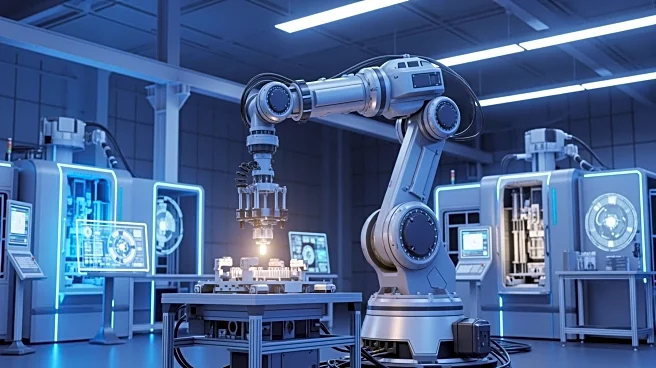What's Happening?
China has achieved a record high in the production of industrial robotic arms, with 595,000 units supplied in the first nine months of 2025. This marks a significant increase from previous years, reflecting a 35.6% year-on-year growth. The surge in production is part
of China's broader strategy to dominate the global automation sector, as evidenced by its stock of in-service robots surpassing 2 million units in 2024. China accounted for over half of all new global installations in 2024, deploying 295,000 of the world's 542,000 new industrial robots. This development underscores China's position as the world's largest market for industrial robots for the 12th consecutive year.
Why It's Important?
The rapid growth in China's industrial robotics sector has significant implications for global market dynamics. Chinese manufacturers, such as Siasun and Estun Automation, are leveraging competitive pricing and government initiatives like 'Made in China 2025' to expand their market share. This expansion challenges established global players like Japan's Fanuc and Germany's Kuka, who have localized their operations in China to remain competitive. The increase in China's industrial robot exports, which jumped nearly 60% year-on-year to $746 million in the first half of 2025, indicates a shift in global supply chains. This could lead to increased competition and innovation in the global robotics industry.
What's Next?
The future of the industrial robotics market is likely to see continued coexistence between global giants and Chinese manufacturers. While foreign companies will maintain their presence in high-end applications, Chinese firms are expected to solidify their hold on the domestic mass market and challenge global players on the world stage. This intense competition within China is reshaping its manufacturing base and redefining the balance of power in global industrial automation. As Chinese companies continue to innovate in areas like collaborative robots and AI-enhanced systems, they are positioned to capture more global market share.
Beyond the Headlines
The rise of China's industrial robotics sector may have broader implications for global trade and economic policies. As Chinese companies expand their export markets, particularly to Southeast Asia, Mexico, and Thailand, they could influence global supply chain strategies. This shift may prompt other countries to reassess their trade relationships and manufacturing strategies, potentially leading to new alliances and economic policies. Additionally, the competitive pricing and rapid innovation of Chinese manufacturers could drive technological advancements and cost reductions in the global robotics industry.
















